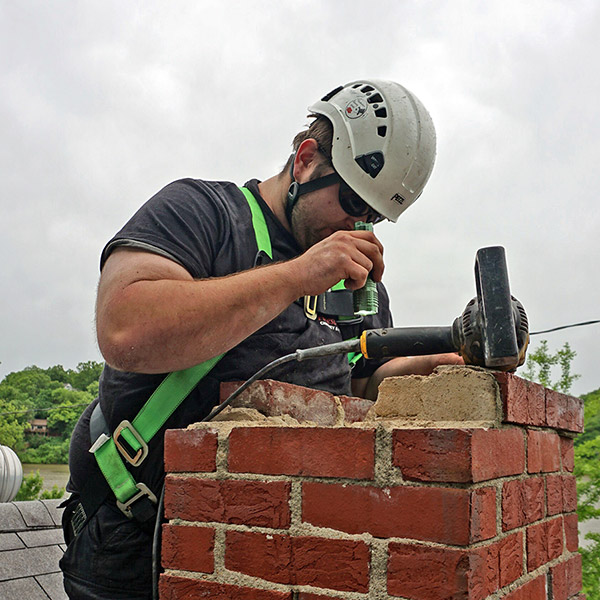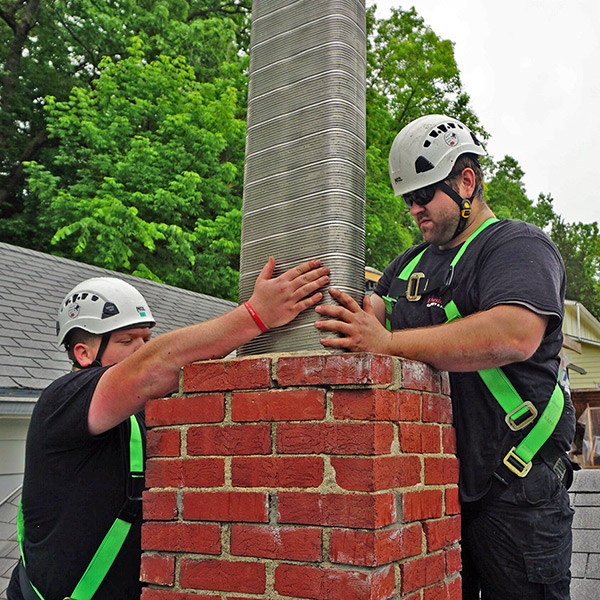5 Things That Can Happen to a Chimney in the Spring
With winter in the rearview mirror, you’re probably ready to enjoy the beautiful warm and sunny days of spring. For many families, that also means thinking about their spring-cleaning chores. More than 75% of households clean their homes in the spring, according to the American Cleaning Institute. Since several things can happen to a chimney, don’t forget to add chimney cleaning and inspection to your spring-cleaning checklist.
 Uninvited Guests
Uninvited Guests
When the trees and flowers are blooming in the spring, birds, raccoons, squirrels, and other wildlife come out to play, hunt for food, and look for a place to rest. As they roam around, they may climb up your chimney while escaping predators or idle curiosity. Once they get to the top, they will instinctively try to go inside unless there is a chimney cap to stop them. Small birds will also fly in and have a look around. They also bring with them dirt, debris, and bacteria, and attract pests like rats and mice. If you are noticing an ugly smell in the chimney in the spring, you may have some unexpected guests in the flue.
Water Leaks
Water leaking in the chimney can result in significant damage to the flue and metal components. Years of exposure to winter weather conditions and the effects of the freeze-thaw cycle can cause cracks in the masonry, including exterior brick and mortar and chimney crown. These cracks and crevices can allow water to leak into the flue where it can also weaken the flue liner and firebox. Water intrusion can also occur if the chimney cap is broken or non-existent.
 Flue Liner Damage
Flue Liner Damage
A chimney leak or an accumulation of creosote, dirt, and chemical residues created during combustion can damage the flue liner. The damage can continue into the spring and summer. It also increases the risk of a chimney fire, which can cause clay flue tiles to crack or split, accelerating its deterioration if it is not repaired before the next burn season.
Creosote Build-Up
Creosote is a hydrocarbon compound naturally derived during combustion. It is harmless in its initial stage but develops into a thick, tarry, highly flammable substance as it accumulates in the flue.
An overwhelming majority of residential fires are due to excessive creosote. Sweeping the chimney in the spring reduces the risk of fire and prepares it for the next winter season.
Energy Loss
An unclean chimney and masonry damage can result in wasted energy and higher utility bills. The cooler air-conditioned indoor air escapes through cracks in the masonry, flue liner, and other parts of the chimney while warmer air is drawn inside. The resulting energy loss makes your air conditioning unit run longer to maintain cooler temperatures, which will increase energy costs in the spring and summer.
Spring Cleaning and Chimney Inspection
Take advantage of the off-season and schedule your annual chimney inspection and cleaning in the spring before demand increases. It will be one last thing you will need to do on your spring cleaning checklist, and you will have peace of mind knowing that your fireplace and chimney are safe and ready for the next cold spell.
The post 5 Things That Can Happen to a Chimney in the Spring appeared first on Fluesbrothers Chimney Service.